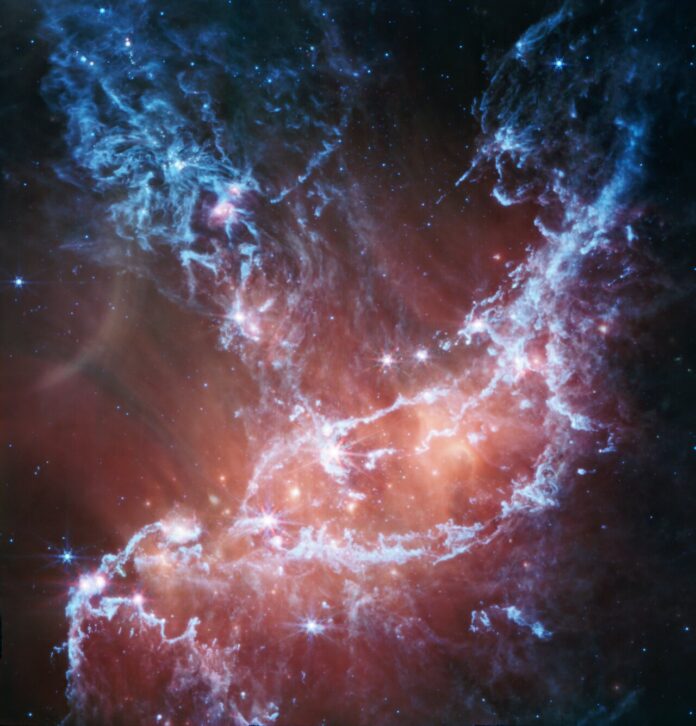
One of the greatest benefits of the James Webb Space Telescope is its ability to provide astronomers with detailed images of the regions where new stars are born. The latest example featured in the new image from the Webb Mid-Infrared Imager (MIRI) is NGC 346, the brightest and largest star formation region in the Small Magellanic Cloud.
The Small Magellanic Cloud (SMC) is a satellite galaxy of the Milky Way, visible to the naked eye in the southern constellation Tucana. This small companion galaxy is more primitive than the Milky Way because it contains fewer heavy elements that are formed in stars as a result of nuclear fusion and supernova explosions compared to our own galaxy.
Because space dust is formed from heavy elements such as silicon and oxygen, scientists had expected SMCs to have little dust. However, the new MIRI image, as well as a previous image of NGC 346 from the Webb Near Infrared Camera released in January, show a large amount of dust in this region.
In this representative color image, the blue tendrils reflect radiation from material that includes dust silicates and soot chemical molecules known as polycyclic aromatic hydrocarbons, or PAHs. The more diffuse red radiation shines from warm dust heated by the brightest and most massive stars in the center of the region.

Credit: NASA, ESA, CSA, N. Habel (JPL), P. Kavanagh (Maynooth University)
The arc in the center left may be a reflection of light from a star near the center of the arc (similar, fainter arcs appear in connection with the stars in the bottom left and top right). Finally, bright spots and filaments indicate areas with a large number of protostars. The research team identified 1001 point light sources, most of which are young stars still sitting in their dust cocoons.
By combining the Webb data in the near and mid-infrared, astronomers can conduct a more complete census of stars and protostars in this dynamic region. The results have implications for our understanding of galaxies that existed billions of years ago, during an era in the Universe known as “cosmic noon” when star formation was at its peak and heavy element concentrations were lower, as seen in the SMC.








